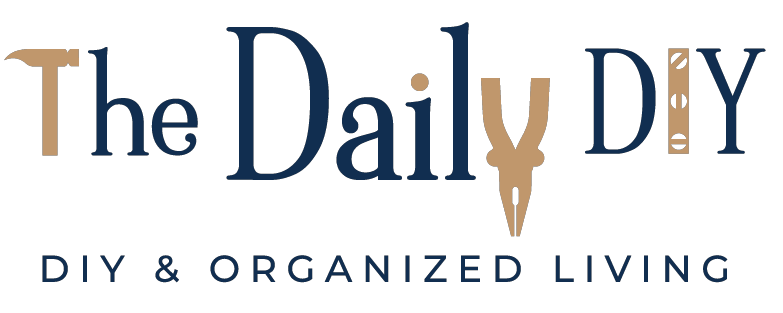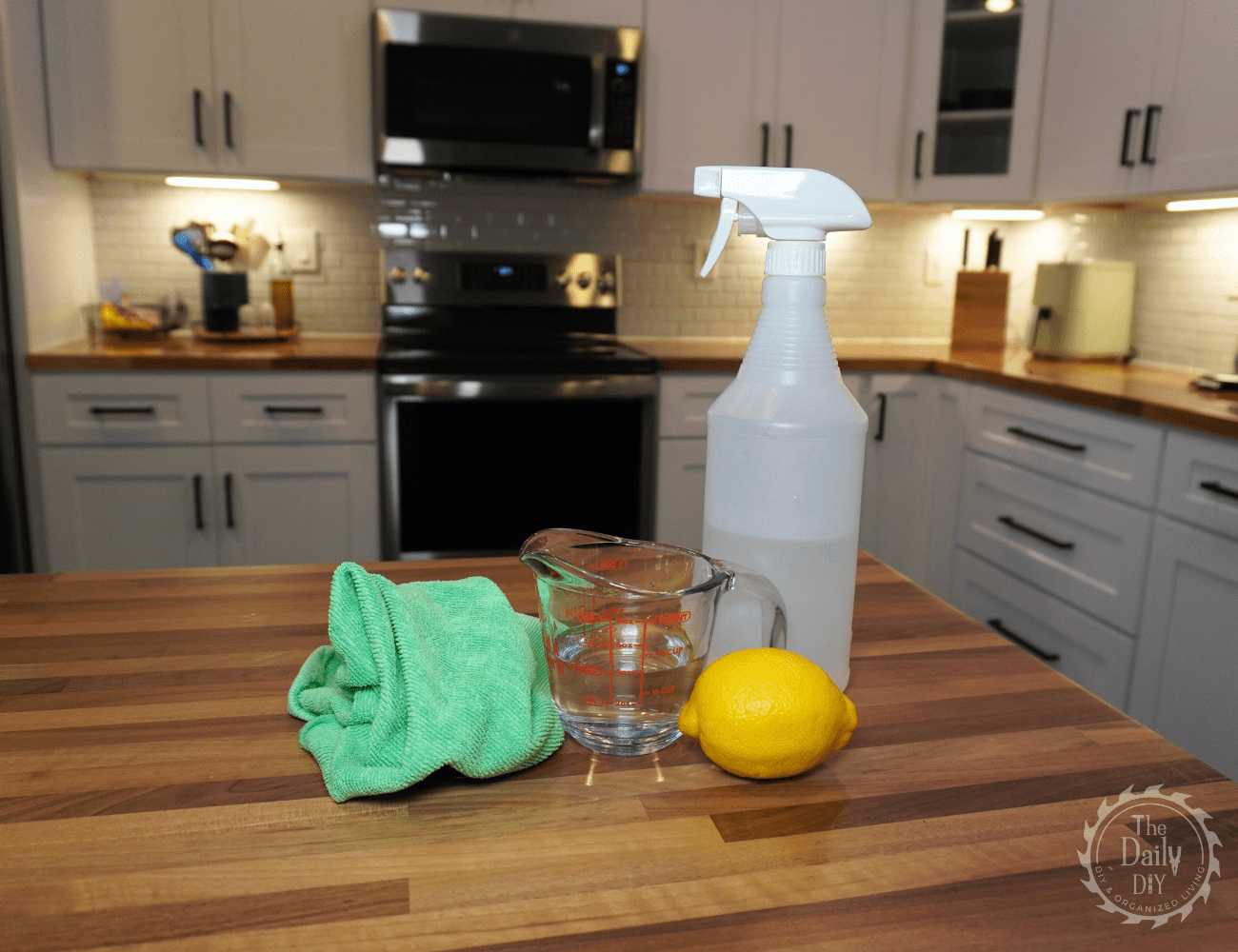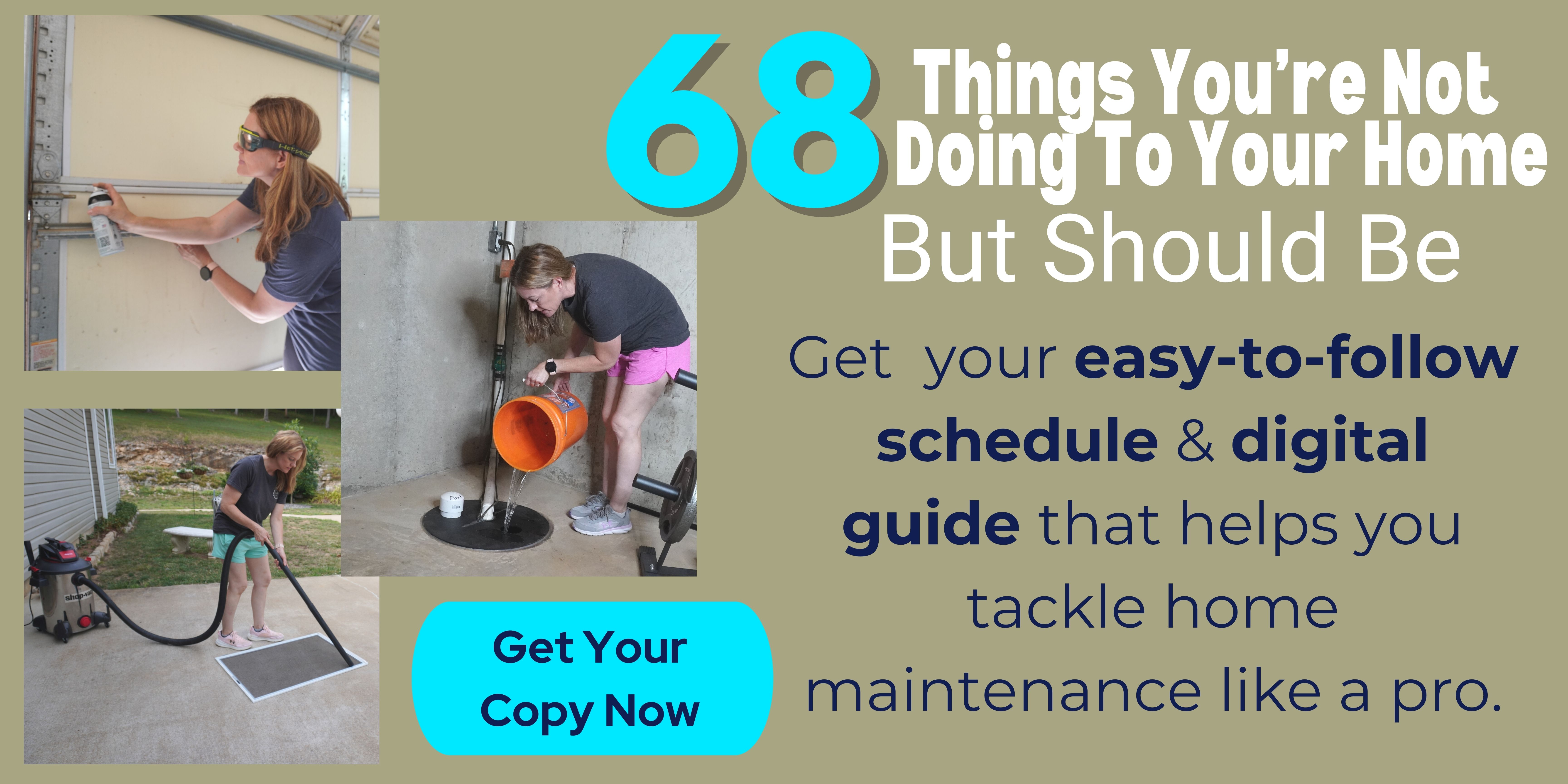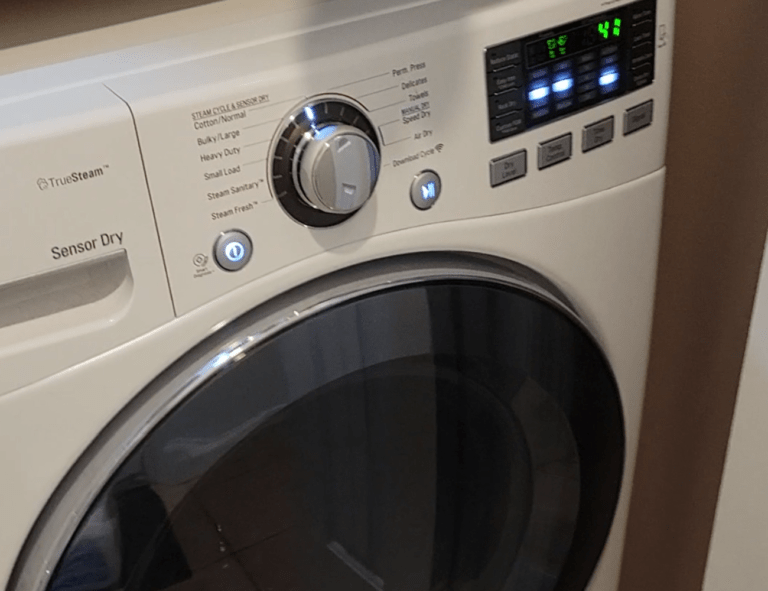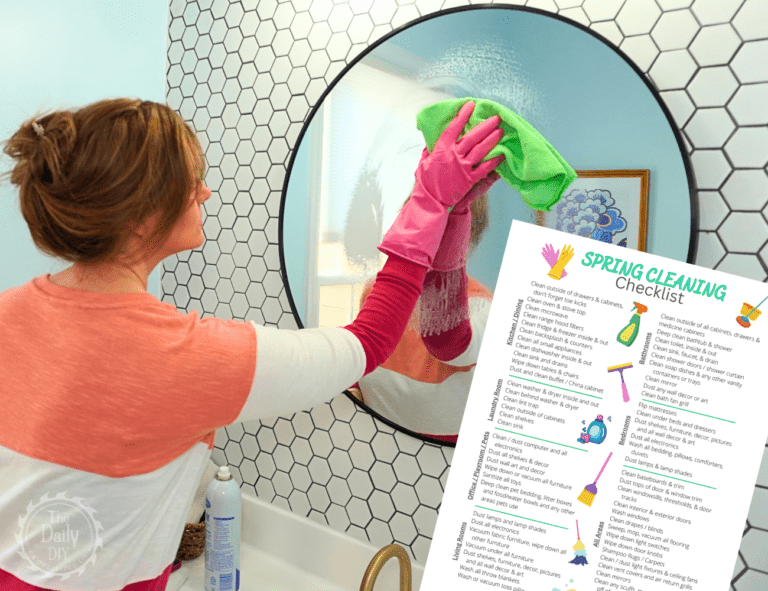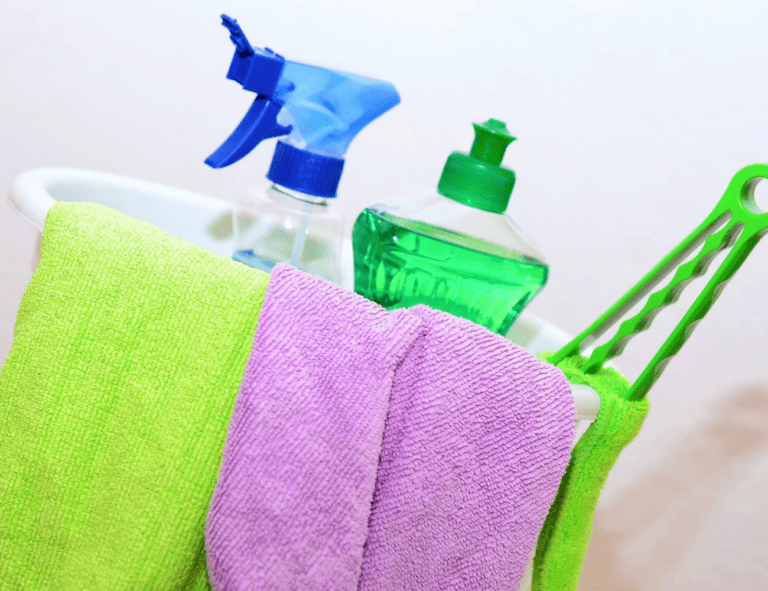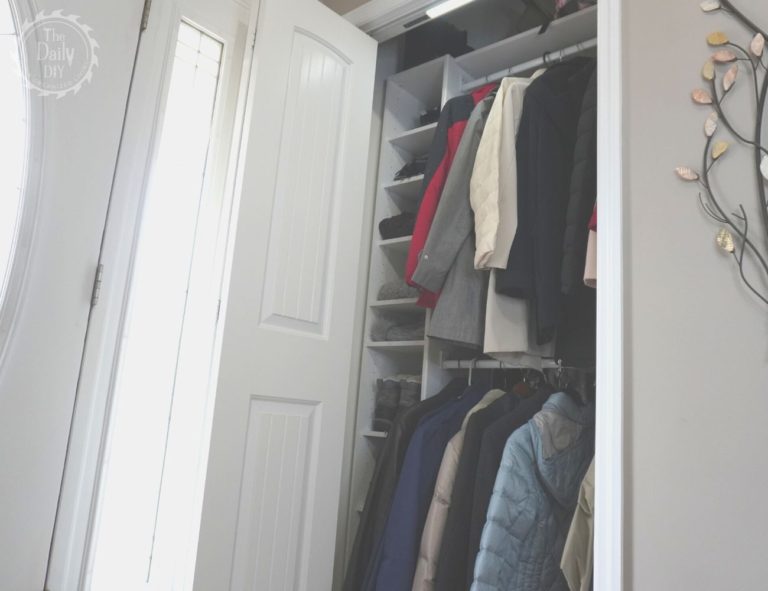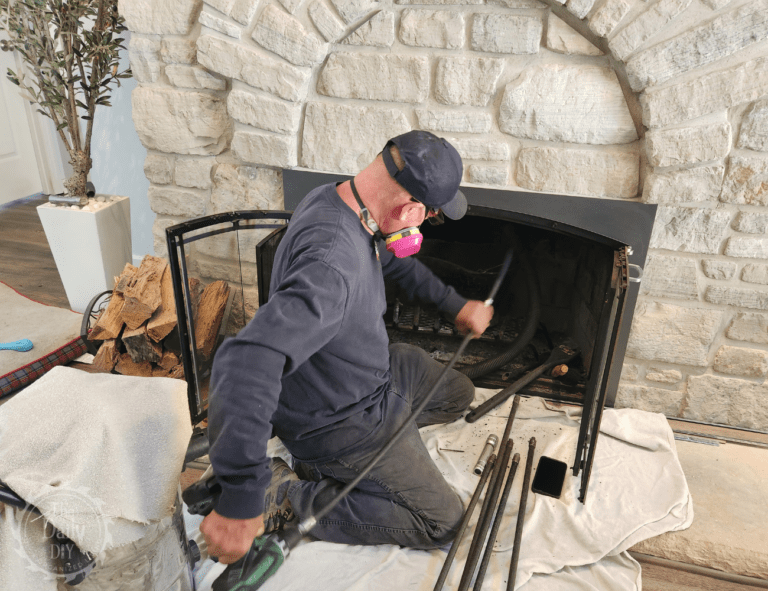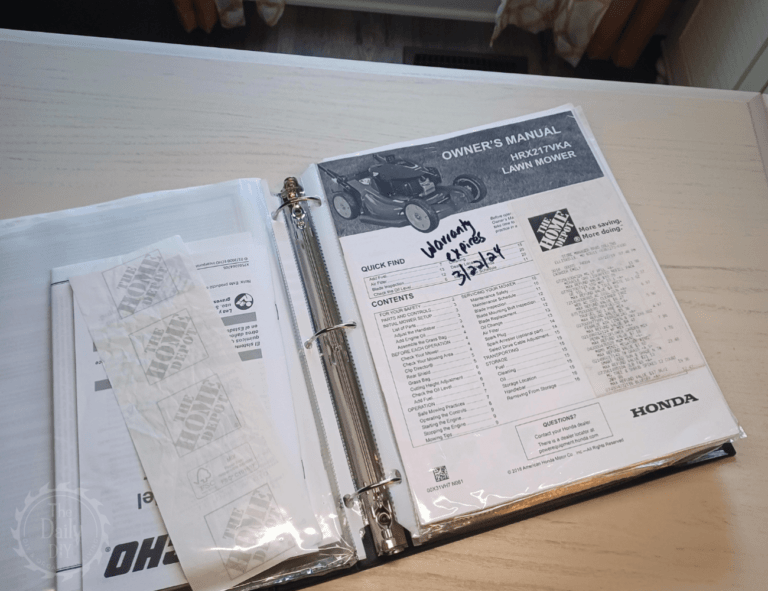The Ultimate Guide To Cleaning With Vinegar
Looking at natural cleaning solutions, cleaning with vinegar is a great, eco-friendly option. Using distilled white vinegar to clean, especially when diluted with water, can help you tackle many of your cleaning chores. The best part is that a vinegar cleaning recipe is adaptable. Whether it’s cutting through grease on kitchen surfaces, descaling appliances, or shining windows, a solution of cleaning with vinegar and water can address all these needs.
Vinegar, with its humble origins and simple composition, has stood the test of time as a powerful tool in the battle against grime, bacteria, and odors. Its natural acidic properties make it not only effective for a wide range of cleaning tasks but also a safe and sustainable choice for those looking to minimize their environmental footprint and reduce chemical use in their homes.
Related Post: 10 Things You Can Clean With Baking Soda and Vinegar, and Clever Ways To Clean With Baking Soda
The Science of Vinegar
At the heart of vinegar’s effectiveness as a cleaning agent is its main active ingredient, acetic acid. This naturally occurring compound is what gives vinegar its distinct sour taste and pungent smell, but more importantly, it’s responsible for vinegar’s powerful cleaning and disinfecting capabilities. Acetic acid works by breaking down dirt, grease, and grime on a molecular level, allowing for easy removal from various surfaces. Moreover, its acidic nature creates an environment that is inhospitable to many types of bacteria and mold, making vinegar an excellent choice for sanitizing and deodorizing around the home.
The science behind vinegar’s cleaning efficacy is not just about its ability to clean effectively but also about its safety profile. Unlike many commercial cleaners that contain harsh chemicals, vinegar offers a non-toxic, biodegradable alternative that is safe for use around children and pets. Understanding the science of vinegar shows us why it’s such a great cleaning agent.
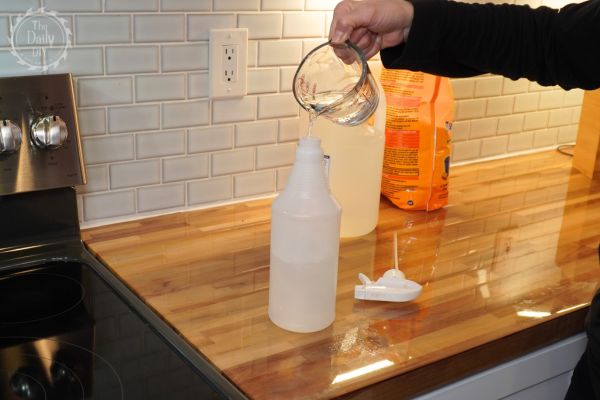
Preparing Your Vinegar Cleaning Solution
Mixing up your vinegar cleaning solution is an easy process that you can customize. It allows you to tackle many cleaning tasks throughout your home. The foundation of any effective vinegar cleaner recipe begins with understanding the right white vinegar for cleaning ratio. For most household cleaning tasks, a cleaning with vinegar and water ratio of 1:1 is recommended. This means mixing one part water with one part distilled white vinegar. This creates a balanced solution that cuts through dirt and grime without being harsh. When preparing your cleaning solution, consider the specific task at hand. For tougher jobs like cleaning grout or heavy buildup, you might opt for a stronger concentration of vinegar, using a higher vinegar to water ratio.
For those looking to enhance their cleaning mixture, cleaning with oils can introduce aromatic benefits. Adding a few drops of essential oils such as lemon, lavender, or tea tree oil to your vinegar solution can leave behind a pleasant scent.
A basic vinegar cleaner recipe might look something like this:
- Mix 1 cup of distilled white vinegar with 1 cup of water in a spray bottle, adding 10-15 drops of your preferred essential oil (optional). This versatile mixture is great for wiping down countertops, cleaning windows, or freshening up bathroom surfaces.
- For tasks requiring a bit more abrasiveness, such as scrubbing sinks or bathtubs, you can create a paste by mixing vinegar with baking soda, applying directly to the area, and scrubbing gently.
By mastering the art of preparing your vinegar cleaning solution, you can harness the natural power of vinegar to create a healthier, cleaner home. Remember, the key to effective cleaning lies in the balance of ingredients, allowing for a safe and efficient way to maintain the cleanliness of your living spaces.
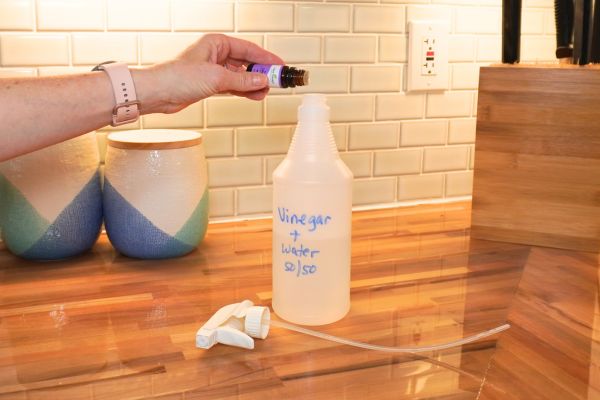
What Not To Clean With Vinegar
While vinegar is a great eco-friendly cleaning solution, it’s crucial to be aware of what not to clean with vinegar to avoid potential damage. One of the primary disadvantages of vinegar in cleaning is its acidity. This can be harmful to some surfaces. Here are a few to avoid:
- Vinegar should not be used on natural stone surfaces like granite or marble, as it can etch and dull the finish.
- Avoid using it on waxed surfaces and certain types of hardwood floors as vinegar may damage these surfaces, stripping away the wax or finish over time.
- Do not use on electronic screens, such as those on smartphones, tablets, and computers, as the liquid can seep into and damage the components.
- Steer clear of using it on cast iron or aluminum as it can lead to corrosion due to the acidic nature of the solution.
Being mindful of these limitations and understanding the disadvantages of vinegar in cleaning ensures that you utilize vinegar effectively without causing harm to your belongings. Always test a small, inconspicuous area first or consult the manufacturer’s care instructions to ensure safety.
Kitchen Cleaning with Vinegar
Vinegar’s natural acidity makes it a powerful ally in the kitchen. It can tackle everything from daily cleaning tasks to more stubborn challenges. Here are a few specific areas to clean using vinegar.

Cleaning a Coffee Pot With Vinegar
First, fill the coffee pot’s reservoir with equal parts water and white vinegar and run a brewing cycle. Then follow up with a couple of cycles of plain water to rinse thoroughly.
Related Post: Best Way To Clean Your Coffee Maker
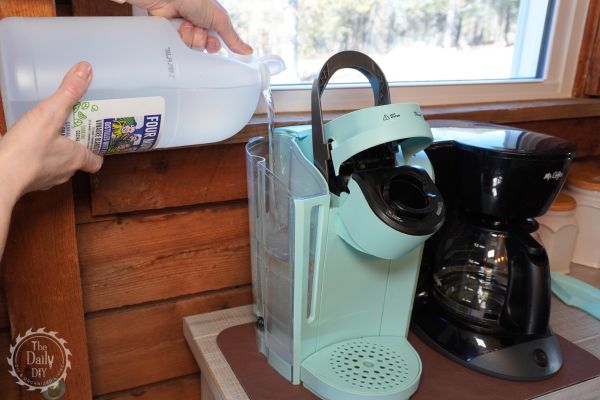
Cleaning a Keurig With Vinegar
For Keurig’s (or similar single-cup coffee machines), fill the water reservoir with a mixture of equal parts vinegar and water. Run the machine several times without a pod, and finish by running it with water only. This process not only descales the machine but also cleans out any lingering bacteria or mold.
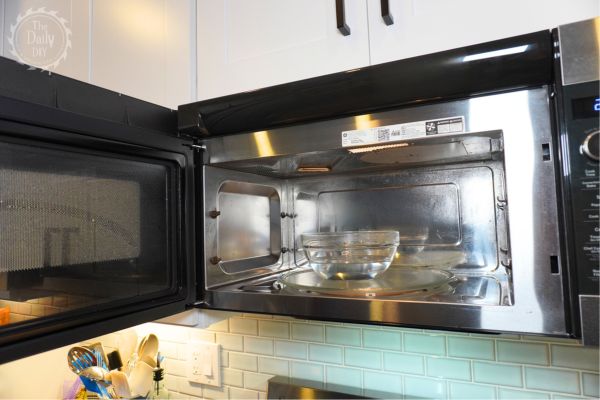
Microwave Cleaning With Vinegar
Begin my mixing 1 cup of water with 1 cup of vinegar in a microwave-safe bowl. Next, heat the mixture until it boils and steam fills the microwave. Keep the door closed for a few minutes to lock in the steam. This steam loosens grime and food splatters, making them easy to wipe away with a cloth or sponge.
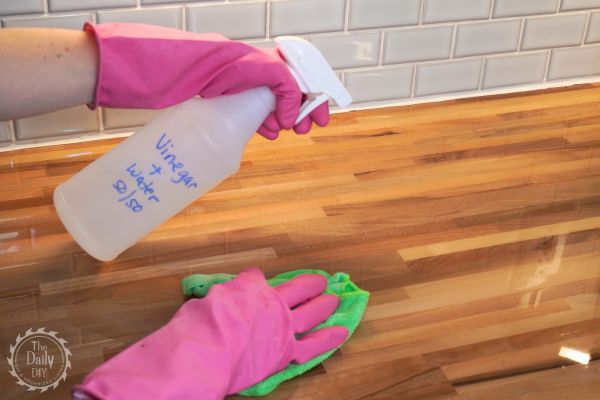
Cleaning Countertops With a Vinegar / Water Solution
A simple solution of vinegar diluted with water is great to wipe away spills, stains, and bacteria. However, it’s important to note that vinegar should be used cautiously on natural stone countertops to avoid etching the surface.
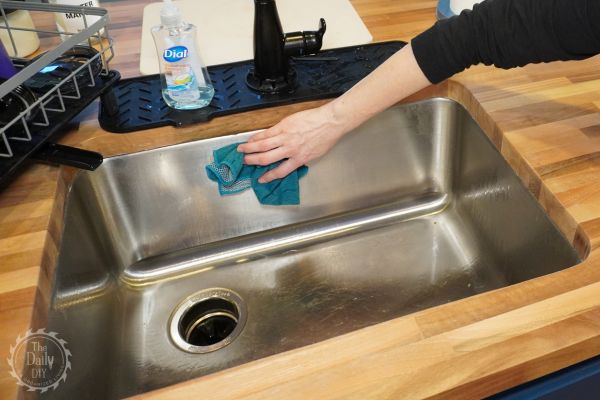
Cleaning Sinks With Vinegar
Vinegar is particularly effective in restoring shine and removing soap scum and water spots. Pour vinegar onto a cloth or sponge to scrub the sink. A stainless steel sink especially will benefit as vinegar helps to maintain its cleanliness and luster.
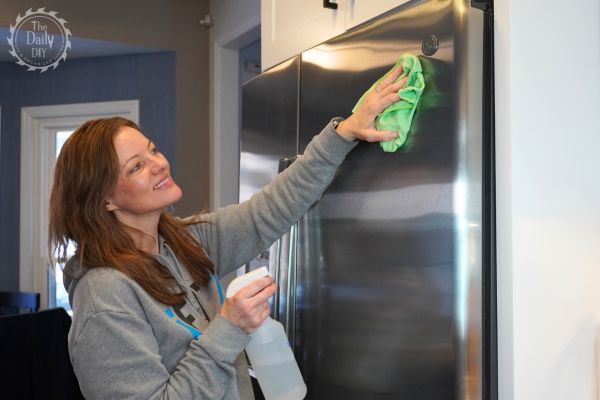
Clean Your Appliances With Vinegar
For appliances, wiping them down with a 50/50 mix of vinegar and water solution can remove fingerprints, smudges, and grease, leaving them sparkling clean.
For fridges & stoves:, wiping the outside down with a vinegar and water solution can remove fingerprints, smudges, and grease, leaving them sparkling clean. Use the same solution to clean the fridge interior as well.
For dishwashers: First, fill a dishwasher safe cup with vinegar and place it on the top rack. Run a full cleaning cycle on the hottest setting. After, use your 50/50 mixture to clean the outside.
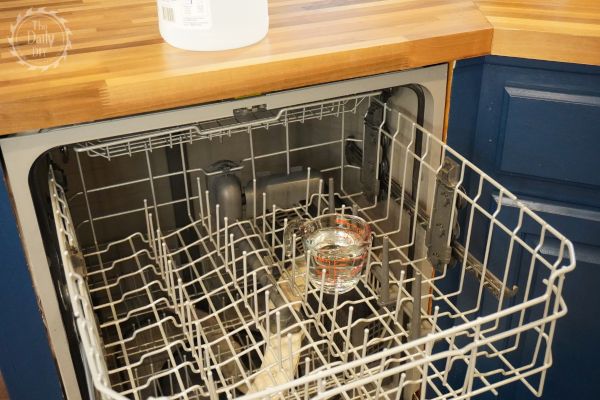
For achieving a streak-free shine on glass and stainless steel, the key is to use a diluted vinegar solution and a soft, lint-free cloth. First, spray the solution directly onto the surface and polish with the cloth in a circular motion for glass or along the grain for stainless steel. This method not only ensures that windows, mirrors, and stainless steel appliances are streak-free, but also uses a non-toxic approach for a safe and clean kitchen environment.
These vinegar-based solutions for kitchen cleaning not only ensure a deeper clean but also promote a safer, chemical-free environment in the heart of your home.
Bathroom Cleaning With Vinegar
The bathroom, with its constant moisture and usage, is a breeding ground for bacteria, mold, and soap scum. Employing a vinegar cleaning solution for the bathroom can tackle these issues head-on, ensuring a clean and hygienic space. Vinegar’s natural acidity is perfect for breaking down the grime that tends to accumulate in bathrooms. This makes it an essential tool for maintaining cleanliness.
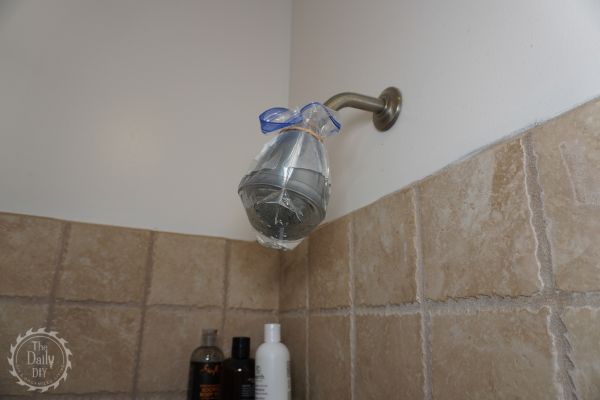
Vinegar to Clean Shower Head
Over time, shower heads can become clogged with mineral deposits. This affects water flow and shower quality. To address this, fill a plastic bag with white vinegar and secure it around the shower head using a rubber band. Leave it to soak overnight. In the morning, remove the bag and run the shower to rinse. This process will dissolve the deposits, ensuring your shower head is clean and functional.
Cleaning Bathroom With Vinegar
For a general bathroom clean-up: use a vinegar cleaning solution on almost every surface, from countertops to toilets. Mix equal parts of vinegar and water in a spray bottle for an effective disinfectant that is great to clean surfaces, faucets, and even the toilet bowl. For tougher stains or mildew, undiluted vinegar can be applied directly before scrubbing. Remember not to use it on natural stone.
Vinegar Cleaning Solution for Bathroom Tiles: Tiles are particularly prone to mold and mildew. Spray them with a solution of equal parts water and vinegar, letting it sit for a few minutes before scrubbing with a tile brush.
For grout lines: Apply a paste made up of baking soda and vinegar. Let it for 20 minutes, then scrub clean with a grout brush.
Laundry Uses For Vinegar
Using vinegar in your laundry routine can offer a range of benefits. From softening fabrics to maintaining the cleanliness and efficiency of your washing machine.
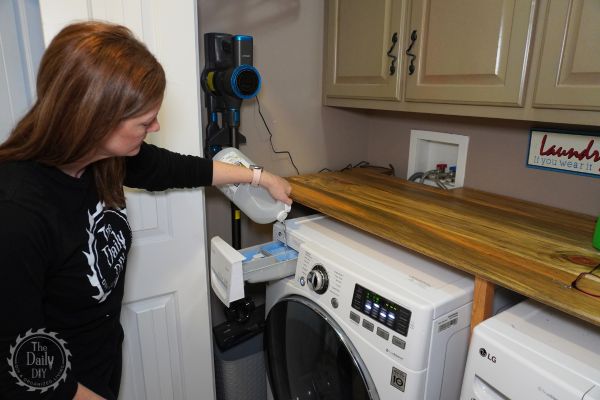
Using Vinegar as a Fabric Softener
Traditional fabric softeners can leave behind residues and chemicals that may irritate sensitive skin. Adding 1/2 cup of vinegar to the rinse cycle can soften fabrics without the use of harsh chemicals. The vinegar helps to break down laundry detergent effectively, leaving your clothes feeling soft and free of soap residue. This is especially helpful to use vinegar in washing machine for towels. Not only do they stay soft, but also free from wax buildup that commercial fabric softeners can leave behind, which can decrease their absorbency.
Cleaning Washing Machine With Vinegar
Over time, washing machines can develop unpleasant odors and buildup from detergent and fabric softener residue. To clean your washing machine, run a hot water cycle with 2 cups of white vinegar, without any clothes in the machine. This will help to remove soap scum and mineral deposits from the wash drum and hoses, ensuring your machine runs efficiently and stays free of odors.
Related Post: How To Clean Front Load Washer Easy
Vinegar For Floor Cleaning
Vinegar is a fantastic solution for floor cleaning. It offers a safe and effective way to keep various types of flooring clean without the use of harsh chemicals. Its natural acidity helps to dissolve dirt, grime, and sticky residues, leaving floors sparkling clean.
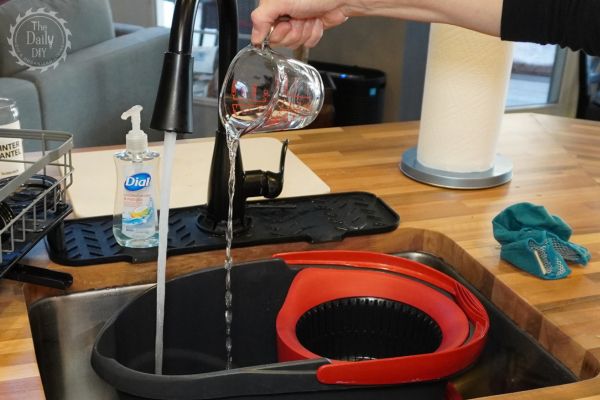
For Tile and Linoleum Floors
Mix a solution of 1/2 cup of white vinegar in a gallon of warm water. This diluted vinegar solution is gentle enough not to damage the floors but effective enough to clean and disinfect. Mop the floors as usual, allowing the vinegar to cut through dirt and bacteria. There’s no need to rinse; once the floor dries, the vinegar smell will dissipate, leaving behind a clean, streak-free surface.
For Hardwood Floors
You want to be especially careful when using vinegar on certain types of hardwoods as it can damage them. And especially do not use if the floors have wax coating over them as it can strip down the wax. If you have determined that you can use vinegar on your hardwood floors, it’s important to use a more diluted solution to protect the finish.
For Laminate Floors
Like hardwood, laminate flooring requires a gentle touch. Use 1/4 cup of vinegar to a gallon of warm water to gently clean the surface. The vinegar solution effectively removes footprints and stains without leaving a residue.
When using vinegar for floor cleaning, always ensure that the solution is appropriately diluted to avoid any potential damage to the flooring. Additionally, it’s a good idea to test the solution on a small, inconspicuous area first to ensure it does not affect the finish or color of the floor. Regular cleaning with a vinegar solution can help maintain the beauty and longevity of your floors, making it a cost-effective and environmentally friendly choice for your home.
Conclusion
We encourage you to experiment with the tips and tricks shared in this guide, adapting them to your home’s unique needs. Embrace the power of vinegar and let it transform the way you clean, ensuring a healthier environment for you and your loved ones. Remember, sometimes the most effective solutions are also the most natural and straightforward. Here’s to a cleaner, greener home with the help of vinegar!
- Related Post: Clever Ways To Clean With Baking Soda
- Related Post: Best Way To Clean Your Basement Drain
- Related Post: 6 Things To Clean and Check Monthly
Do You Have More Tips?
What else have you found to clean using vinegar? Drop them in the comments below.
